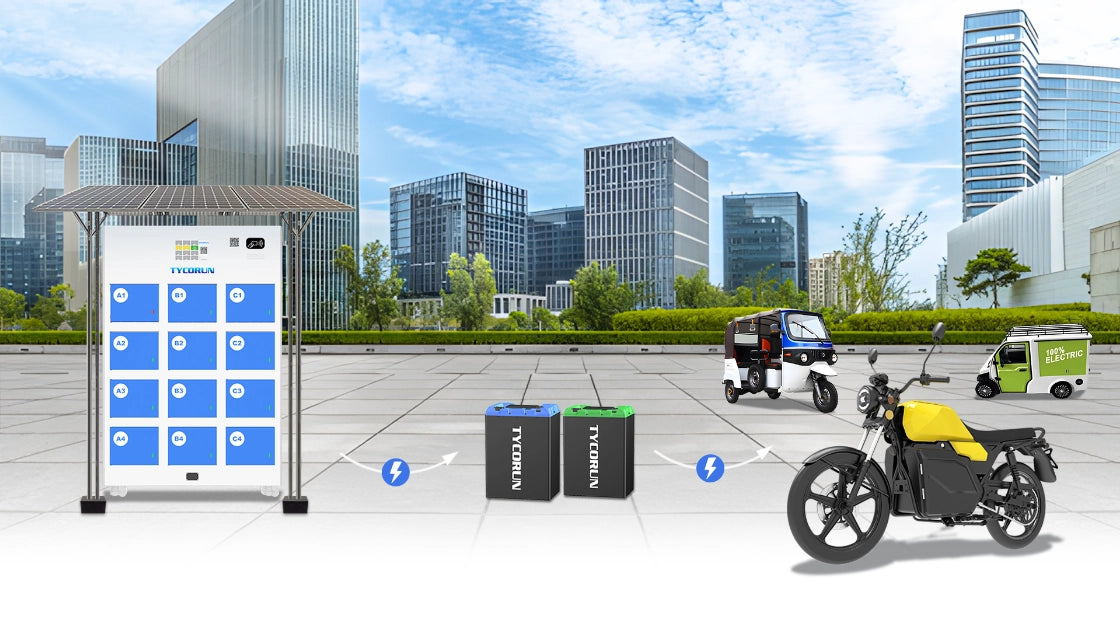Lithium batteries power everything from smartphones and laptops to solar systems and electric vehicles. As technology advances, one key factor often overlooked is lithium battery dimensions. Understanding battery size and shape isn't only about fitting them into devices — it directly affects performance, capacity, voltage, and compatibility. The right battery dimensions ensure efficiency, safety, and a longer lifespan..
This article explores what lithium battery dimensions mean, why they matter, and how choosing the correct size impacts energy output, durability, and overall system performance in today's growing world of portable and electric technologies.

Main content:
- What Are Lithium Battery Dimensions?
- Common Types of Lithium Battery Dimensions
- How Size Affects Battery Performance?
- Why Compatibility Matters
- Battery Standard Sizes and Naming Explained
- Impact of Incorrect Battery Dimensions
- Custom Lithium Battery Packs
- Tips for Buying Lithium Batteries
- Final Thoughts
What Are Lithium Battery Dimensions?
When we talk about lithium battery dimensions, we are referring to the physical size and shape of a battery — its length, width, height, and sometimes diameter if it’s cylindrical. These dimensions determine how and where the battery can be installed.
Different devices require specific battery sizes. For instance:
- A smartphone needs a thin, flat lithium polymer (LiPo) battery.
- An electric vehicle uses large rectangular lithium-ion battery modules.
- A power bank may use several cylindrical 18650 or 21700 lithium cells.

The dimensions are usually measured in millimeters and are part of the model number. For example:
- 18650 cell: 18 mm in diameter and 65 mm in length.
- 21700 cell: 21 mm in diameter and 70 mm in length.
Even a few millimeters difference in lithium battery dimensions can determine whether it fits or not in your device.
Common Types of Lithium Battery Dimensions
Cylindrical Cells
These are the most common form of lithium batteries. They look like regular AA batteries but are more powerful.

Cylindrical lithium battery dimensions:
- 10180: 10.1mm × 18mm (used in small devices like Bluetooth earphones and keychain flashlights)
- 10440: 10mm × 44mm (used in mini flashlights, mini stereos, and speakers)
- 14500: 14mm × 50mm (used in LED flashlights, toys, and digital cameras)
- 16340: 16mm × 34mm (used in LED flashlights and laser lights)
- 18350: 18mm × 35mm (used in vapes, flashlights, and laser pointers)
- 18490: 18mm × 49mm (used in LED flashlights and power banks)
- 18650: 18mm × 65mm (used in laptops, tools, e-bikes, and flashlights)
- 21700: 21mm × 70mm (used in e-bikes, solar lights, and power tools)
- 26650: 26mm × 65mm (used in RC toys and high-power flashlights)
- 32650: 32mm × 67.7mm (used in UPS, wind-solar systems, and toys)
- 32700: 32mm × 70mm (used in EVs, solar storage, and backup systems)
- 38120: 38mm × 120mm (used in EVs, renewable storage, and UPS)
- 40152: 40mm × 152mm (used in EVs, solar storage, and backup systems)
Cylindrical cells are durable, easy to manufacture, and have good energy density. However, their round shape can waste space when multiple cells are packed together.
Read: Cylindrical battery sizes
Prismatic Cells
Unlike standardized cylindrical batteries like the 18650, prismatic cell batteries vary in size depending on the manufacturer and application. They are widely used in electric vehicles, solar and wind energy storage, backup batteries, and portable power systems due to their flexible design and high capacity.

Common Prismatic Battery Characteristics:
- Voltage Range: 3.2V (LiFePO₄) to 3.7V (NMC, LCO)
- Capacity Range: 2000 mAh to over 30,000 mAh
- Dimensions: Commonly from 50 × 70 × 90 mm up to 100 × 200 × 300 mm
- Shell Material: Aluminum or steel casing for strength and safety
- Energy Density: Moderate to high, depending on chemistry
- Thermal Management: Better than pouch cells but slightly less efficient than cylindrical cells
Pouch Cells
Pouch cells, also known as “soft pack” batteries, use a flexible aluminum-plastic film instead of a rigid metal case, making them lighter and more adaptable in shape. Their lithium battery dimensions can vary widely depending on the device — from small smartphone batteries to large EV modules.

Pouch batteries are usually labeled by their thickness × width × height in millimeters; for example, a “103450” cell is 10 mm thick, 34 mm wide, and 50 mm high. Because they’re compact and flexible, pouch cells are widely used in drones, RC vehicles, and portable electronic devices.
How Size Affects Battery Performance?
Battery size doesn’t just determine how it fits inside a device — it also affects how it performs. The lithium battery dimensions are linked to several performance factors such as capacity, discharge rate, and thermal stability.
Let’s look at each factor closely.
1. Energy Capacity
Generally, a larger battery cell can hold more lithium ions, meaning higher capacity (measured in mAh or Ah).
For example:
- A small 14500 lithium battery may store around 800 mAh.
- A larger 21700 cell can store up to 5000 mAh.
This shows how increasing lithium battery dimensions directly boosts energy storage capacity.
2. Power Output
Bigger batteries often have thicker electrodes and more surface area, which allow higher current output. That’s why electric vehicles and heavy-duty power tools use large-format prismatic or cylindrical cells — they can deliver strong bursts of energy.
3. Heat Management
Smaller batteries heat up faster during charging or discharging. Larger cells have better heat dissipation, reducing the risk of overheating and extending lifespan.
So, optimizing lithium battery dimensions also improves safety and thermal control.
4. Weight and Portability
While larger batteries store more energy, they’re also heavier. This trade-off is critical for portable devices like drones, where every gram counts. Choosing the right lithium battery dimensions ensures the perfect balance between power and weight.
Why Compatibility Matters
Choosing the right lithium battery dimensions isn’t only about fitting a battery into a space. Compatibility affects the whole system — from voltage matching to mechanical stability.
1. Voltage and Configuration
Different devices require different voltage levels. For instance:
- A laptop may use a 3S configuration (three cells in series, 11.1V total).
- An electric scooter may use 13S or 14S (48V or 52V).
Selecting the correct lithium battery dimensions ensures you can configure your pack correctly without overcrowding or overheating the system.
2. Device Design and Housing
Battery housings are designed for specific sizes. If your replacement battery has different dimensions, it might not fit — or worse, cause mechanical stress that leads to internal damage.
3. Electrical Connections
Larger batteries may require thicker wires or upgraded battery management systems (BMS) to handle the higher current. So, understanding lithium battery dimensions helps you design safer, more reliable connections.
Battery Standard Sizes and Naming Explained
If you’ve ever wondered what numbers like 18650 or 32700 mean, here’s the secret:
These codes actually describe the lithium battery dimensions.
- 18650 → 18mm diameter × 65mm length
- 104050 → 10mm thick × 40mm wide × 50mm high
These size codes follow standardized guidelines set by the International Electrotechnical Commission (IEC) and the American National Standards Institute (ANSI) to maintain consistency across manufacturers.
Impact of Incorrect Battery Dimensions
Using the wrong size can cause serious issues. Here’s what might happen:
- Loose fit: Poor contact causes intermittent power loss or short circuits.
- Tight fit: Can damage battery casing or cause swelling and overheating.
- Wrong capacity-to-size ratio: May lead to underperformance or battery strain.
- Misalignment: Wrong lithium battery dimensions can cause stress on connectors and terminals.
Always double-check before installing any replacement or DIY battery.
Custom Lithium Battery Packs
Standard battery sizes may not always meet your project’s needs. Some devices have limited space, unique designs, or require special performance characteristics. In such cases, custom lithium battery packs are the best choice to ensure perfect compatibility, durability, and efficiency.

TYCORUN is a global leader in custom lithium battery manufacturing (OEM/ODM), providing both standardized and fully customized solutions for various applications. Their expertise covers a wide range of advanced battery technologies and configurations designed for modern energy systems.
They specialize in lithium-ion technologies such as:
- LiFePO4 batteries: Long life (>4000 cycles), safe, and ideal for solar storage, PowerWalls, EVs, marine, and golf carts.
- Ternary lithium batteries: Lightweight, high energy density, great for cold climates and high-endurance vehicles.
- Semi-solid state batteries: High safety, fast charging, and used in e-motorcycles and battery swap systems.
TYCORUN provides complete energy solutions, including BMS, smart battery swap cabinets, and monitoring software. Clients can customize voltage (12V–76V+), capacity, and lithium battery dimensions to fit any device or system.
From compact electronics to industrial power setups, TYCORUN ensures reliable design, efficient energy performance, and full support from prototyping to production.
Contact TYCORUN today to create your custom lithium battery solution.
Tips for Buying Lithium Batteries
When purchasing or replacing lithium batteries, follow these tips to avoid mistakes:
- Always check the datasheet for exact lithium battery dimensions.
- Compare old and new batteries side by side before installing.
- Buy from trusted brands that list accurate measurements and certifications.
- Consider thermal design — leave space for cooling.
- Check connector type and polarity before connecting.
Taking these steps helps ensure safety, performance, and long battery life.
Final Thoughts
The world of lithium batteries is expanding quickly, but one thing remains constant — lithium battery dimensions matter. From your smartphone to an electric car, the size of a lithium battery plays a critical role in performance, compatibility, safety, and overall efficiency.
Understanding how size affects energy capacity, heat management, and compatibility can help you make smarter choices when buying or replacing batteries. With today’s advances in materials and manufacturing, we can expect even more compact, powerful, and flexible battery designs in the near future.
Whether you’re a beginner building your first project or an engineer designing a power system, always consider lithium battery dimensions as a key factor in your design and decision-making process.
FAQs
What are the dimensions of a 100Ah lithium battery?
12.8V 100Ah Lithium iron phosphate battery features: the dimension of 12.8V 100Ah battery is: L332 x W176 x H220mm.
How to choose the right lithium battery size for my application?
Consider key factors such as the required capacity, available space, voltage needs, and weight limitations. Once you’ve evaluated these, choose a lithium battery size that best matches your device’s performance and design requirements.
Are Lithium-Ion Batteries Smaller Than Other Battery Types?
Yes, lithium-ion batteries are typically smaller and lighter compared to traditional types like lead-acid or nickel-metal hydride batteries, offering higher energy density in a more compact form.
Related Articles: Lightweight battery packs, Lithium battery technology, Charging lithium batteries
















